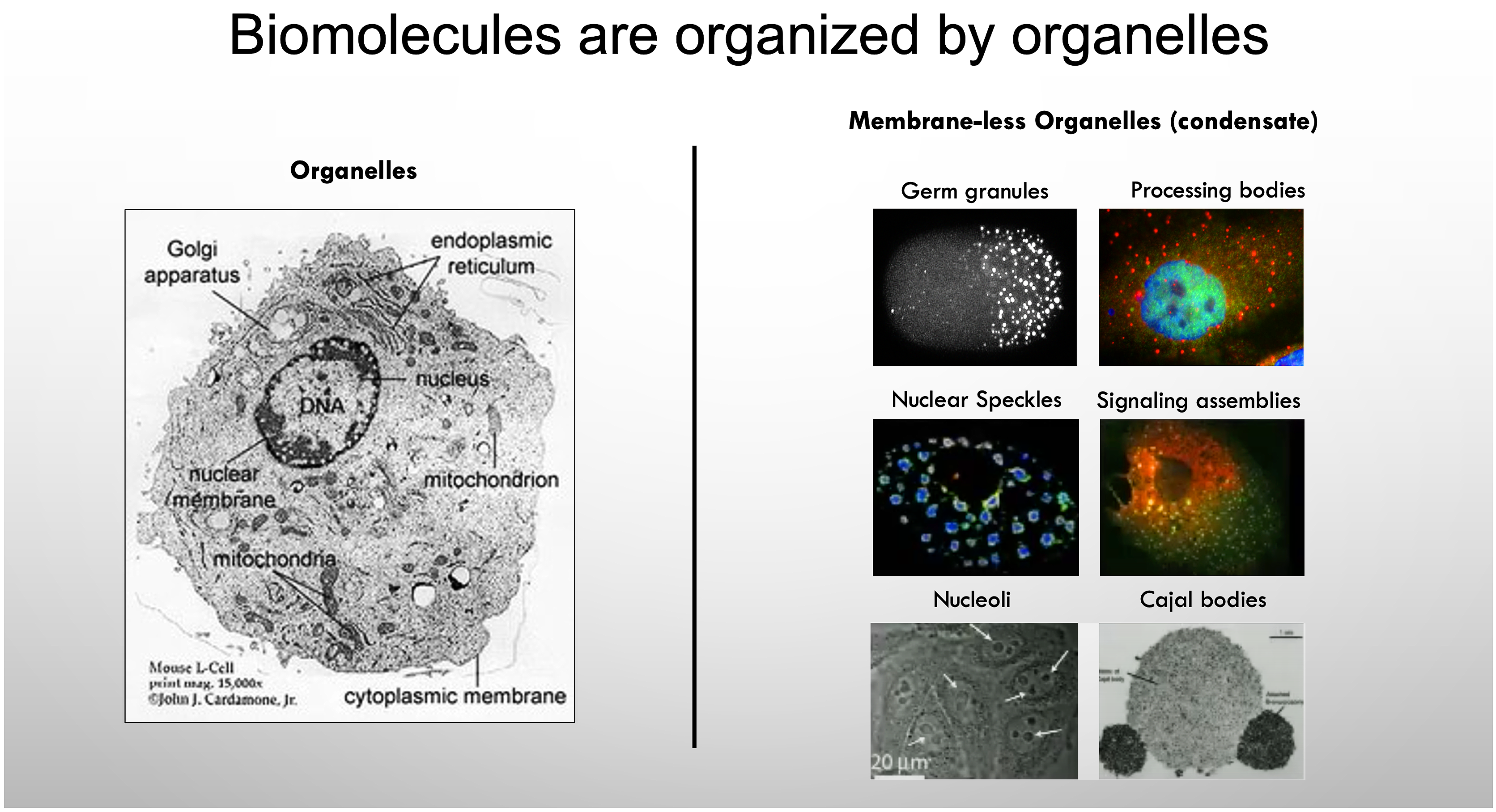
The cytoplasm of a cell is a crowded environment containing millions of proteins and RNA. In this complex and bustling mixture, enzymes need to find their cognate substrates, signaling molecules need to find their receptors, and messages need to be faithfully relayed relatively long distances for cells to grow, divide, and survive. A fundamental problem in cell biology is how this crowded space is organized to enable control of biochemical processes and reactions in space and time. Traditionally this compartmentalization has been done with membrane-bound organelles. Work over the past decade has highlighted however, that large cellular assemblies called biomolecular condensates may play a fundamental role in organizing biochemical functions spatially and temporally within cells. In the Folkmann Lab we are focused on understanding the molecular grammar for how these ‘membrane-less” compartments are built and function with the cell.